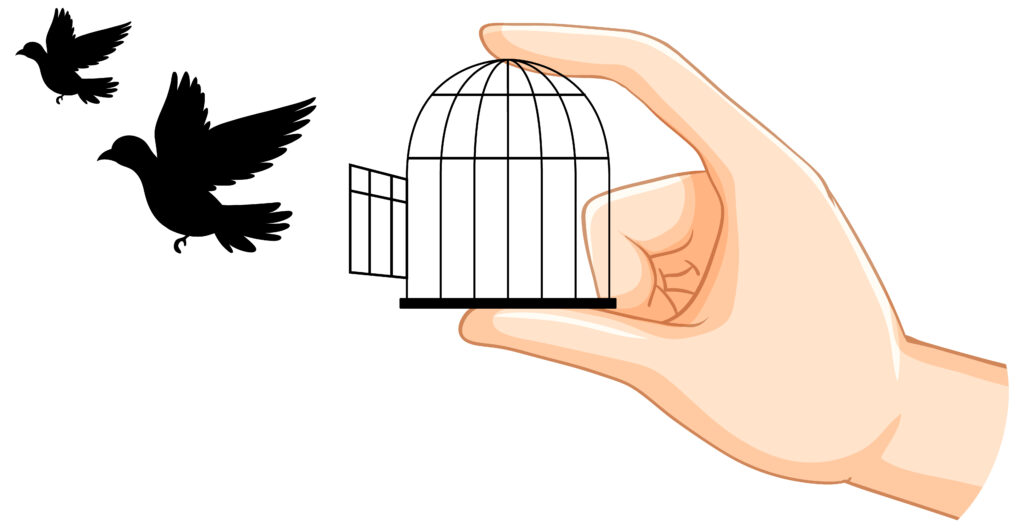Introduction
For many people, visiting a zoo feels like harmless entertainment or even an educational experience. Parents take photos, children laugh, and everyone admires lions, elephants, or giraffes just a few feet away. On the surface, it seems like a joyful family outing. But behind the cages and glass walls lies a disturbing truth: zoos often prioritize profit and attraction over animal welfare. Animals may look calm, yet their suffering is hidden in plain sight. Research from around the world reveals that captivity harms animals physically, psychologically, and even neurologically. This raises an important question — why zoos are cruel and how much animals truly pay for our entertainment.
Life in Captivity vs. Life in the Wild
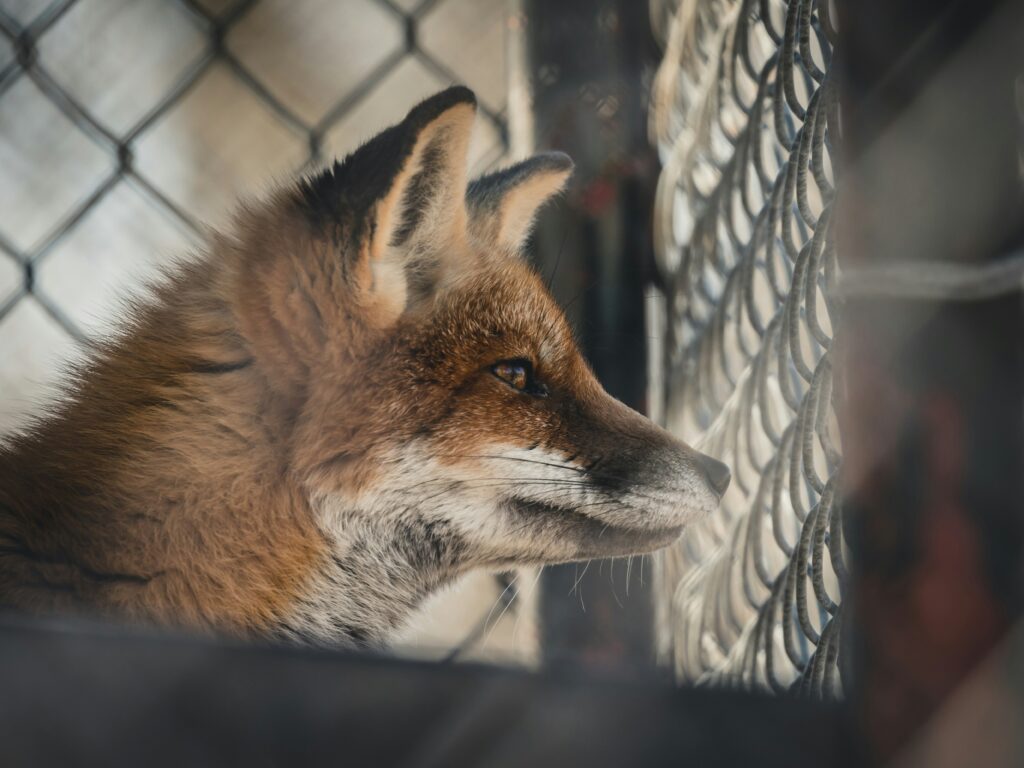
Photo by Peter Lloyd on Unsplash
In the wild, animals live complex and active lives that are impossible to replicate in captivity. For example, elephants naturally walk up to 50 miles a day in search of food, water, and social interaction. Tigers patrol territories as large as 100 square kilometers, marking, hunting, and engaging in behaviors critical to their survival. Birds migrate thousands of miles across continents, navigating vast landscapes with freedom and purpose. These natural behaviors are not just habits; they are essential to the animals’ physical health and psychological well-being and restricting them highlights why zoos are cruel to animals forced into confinement.
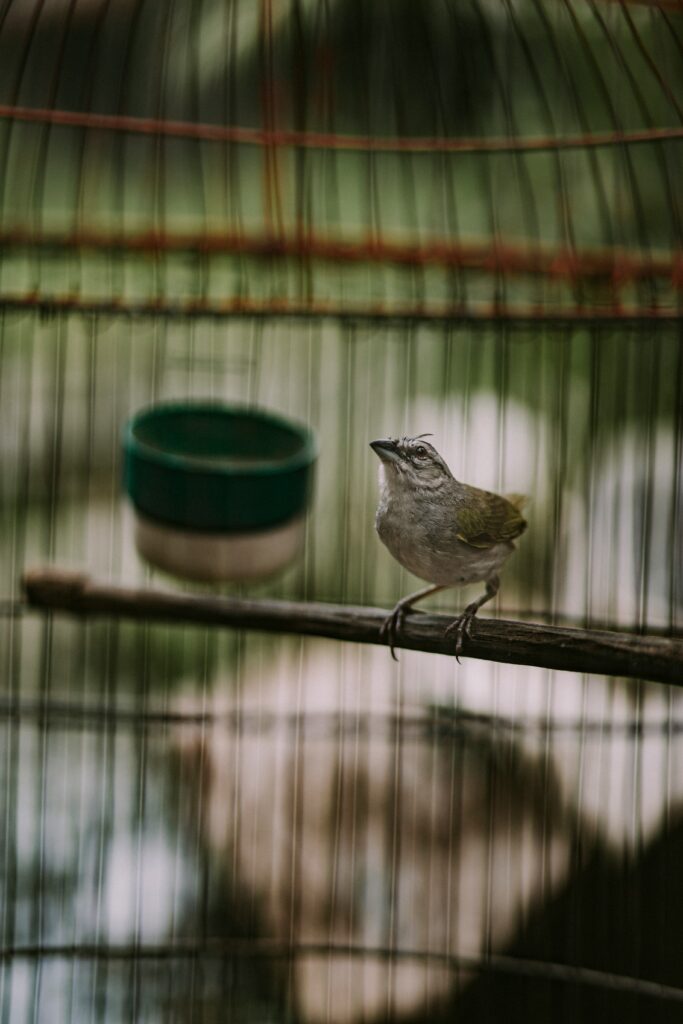
Photo by Oscar Ivan Esquivel Arteaga on Unsplash
Inside zoos, however, this freedom vanishes. Elephants are often restricted to small enclosures thousands of times smaller than their natural range. Tigers, instead of roaming the wild, spend their lives pacing concrete cages, unable to express their instinct to hunt or claim territory. Birds that should be flying across continents are confined to cramped aviaries, their wings clipped or restricted, leaving them unable to fulfill their most basic need: flight.
WHAT IS ZOOCHOSIS ?
This lack of space and stimulation leads to a condition known as zoochosis — a psychological disorder unique to captive animals. Signs include pacing, rocking, head bobbing, bar-biting, feather plucking, or even self-mutilation. A study published in Applied Animal Behaviour Science found that over 70% of elephants in European zoos displayed stereotypic behaviors such as swaying and pacing, clear indicators of stress and frustration. Similarly, big cats like lions and tigers are known to spend up to 48% of their time pacing in enclosures, a behavior almost never observed in the wild. These disturbing realities clearly explain why zoos are cruel, as they force animals into unnatural environments that cause severe psychological suffering. (Check here for more information)
The consequences go beyond behavior. Captivity shortens lifespans for many species. For instance, research has shown that zoo elephants live an average of 17 years less than wild elephants due to stress, obesity, arthritis, and poor reproduction rates. Orcas in marine parks often die decades earlier than their wild counterparts, with many not surviving past their teens despite having a natural lifespan of 50–90 years in the ocean.
What looks like safety and care on the outside is often a silent form of suffering. Behind the bars and glass walls, animals lose not just their freedom but also the very essence of what makes them who they are.
How We See Animals vs. How They Actually Feel
Visitors often mistake survival behaviors for happiness. Just because an animal eats, sleeps, or plays does not mean it is truly thriving. In reality, most zoo animals lack the freedom, space, and stimulation they need to live naturally. This gap between appearance and reality is a powerful reminder of why zoos are cruel, as they mask suffering behind the illusion of normal behavior.
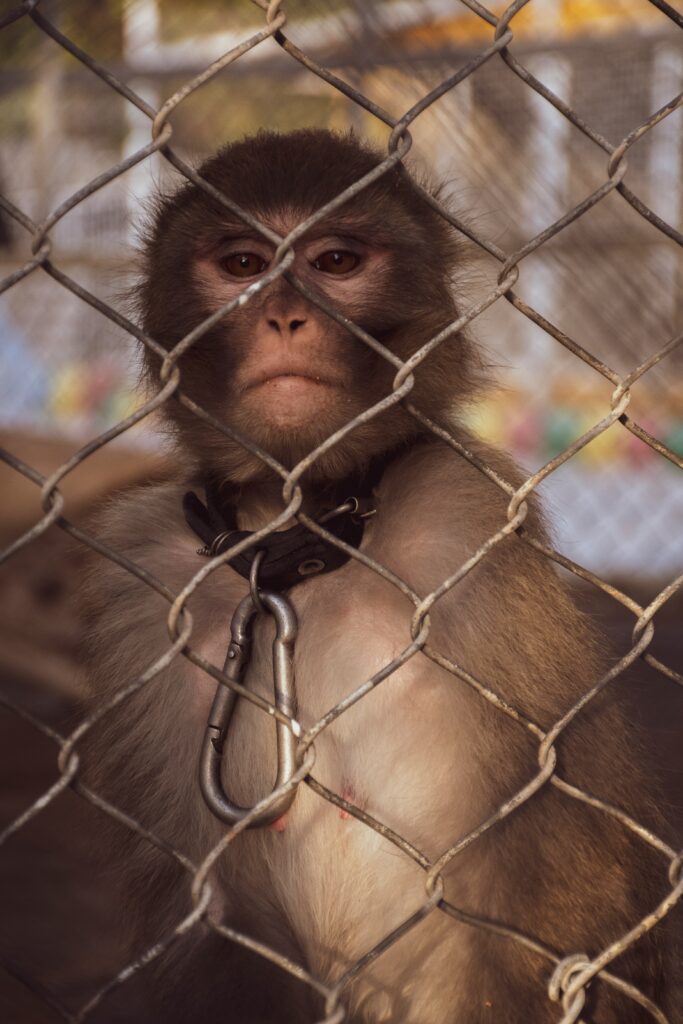
Photo by Mohammad Mardani on Unsplash
- Freedom of choice – In the wild, animals decide where to roam, what to eat, and who to interact with. Captivity strips them of this basic right, forcing them to live within the confines of human-imposed boundaries, with no control over their daily lives.
- Natural family bonds – In nature, many species live in close-knit family groups, where mothers nurture their young and social ties are essential for survival. In zoos, babies are often separated from their mothers for breeding programs, display purposes, or to prevent “overcrowding,” causing deep emotional distress on both sides.
- Purposeful living – Wild animals live with instinctive purpose: hunting, foraging, migrating, and contributing to the balance of ecosystems. In captivity, these natural behaviors are replaced by boredom, pacing, and repetitive movements, as their lives lose the meaning and stimulation nature intended.
Imagine being locked inside a single room for your entire life. That’s the reality for zoo animals.
The Hidden Cruelty of Zoos (why zoos are cruel)
Zoos often claim to protect and conserve wildlife. But the reality is different:
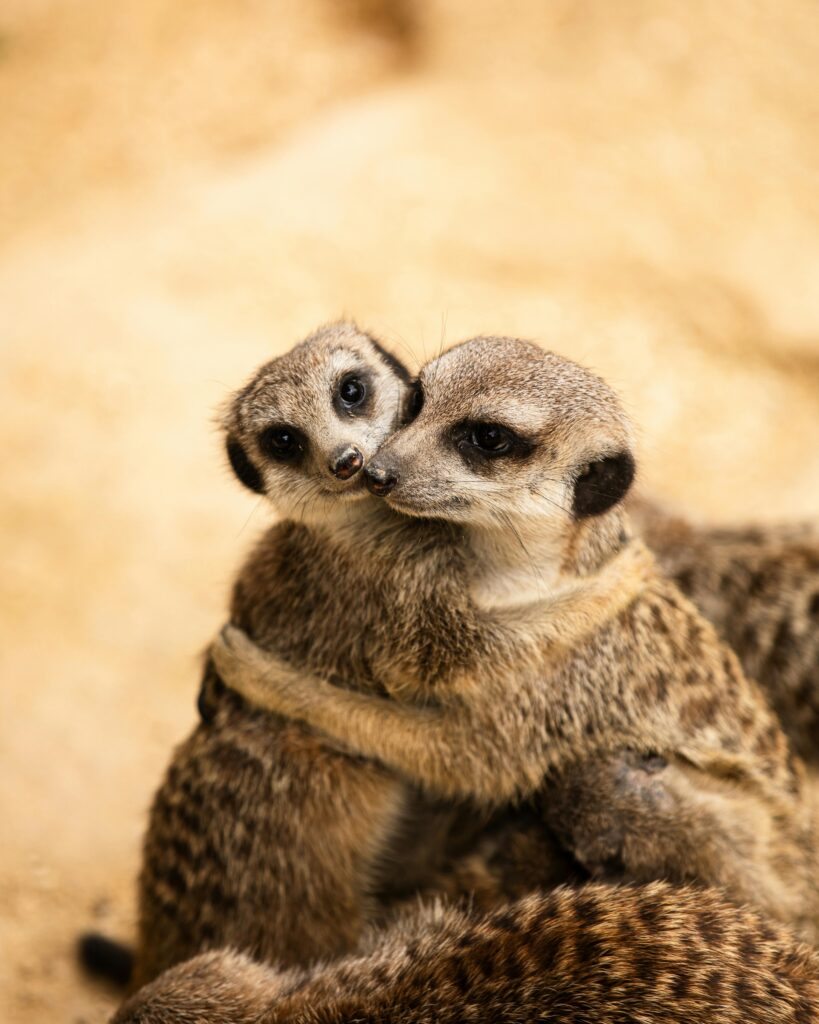
Photo by Michael on Pexels
- Breeding for Display, Not Conservation – While many zoos claim to support conservation, the reality is that countless animals are bred simply to draw more visitors. Cubs, baby elephants, or rare species are used as attractions, not for release into the wild. These animals often spend their entire lives in captivity, with no intention of reintroduction, reducing “conservation” to little more than a marketing tactic.
- Shorter Lifespans – Research shows that captivity can actually shorten the lives of certain species. For instance, elephants, who live up to 60–70 years in the wild, often die decades earlier in zoos due to stress, lack of exercise, and obesity caused by unnatural confinement. The very places that claim to protect animals sometimes create the conditions that cut their lives short.
- Baby Separations – One of the most heartbreaking practices in zoos is the separation of babies from their mothers. This is done to make young animals easier to handle, increase breeding output, or use them as photo opportunities for visitors. For animals who naturally form strong maternal bonds—like primates and elephants—this forced separation causes deep psychological trauma to both mother and child.
- Lack of Stimulation – In the wild, animals spend most of their time exploring, hunting, migrating, or socializing. In zoos, however, their environments are extremely limited. The absence of natural challenges leads to boredom, frustration, and even mental health issues. This often manifests as “zoochosis”—repetitive behaviors like pacing, swaying, or self-harm, which are desperate cries for freedom.
The Myth of Education
One of the strongest defenses of zoos is that they “educate” children. But what do kids really learn when they see a lion behind bars?
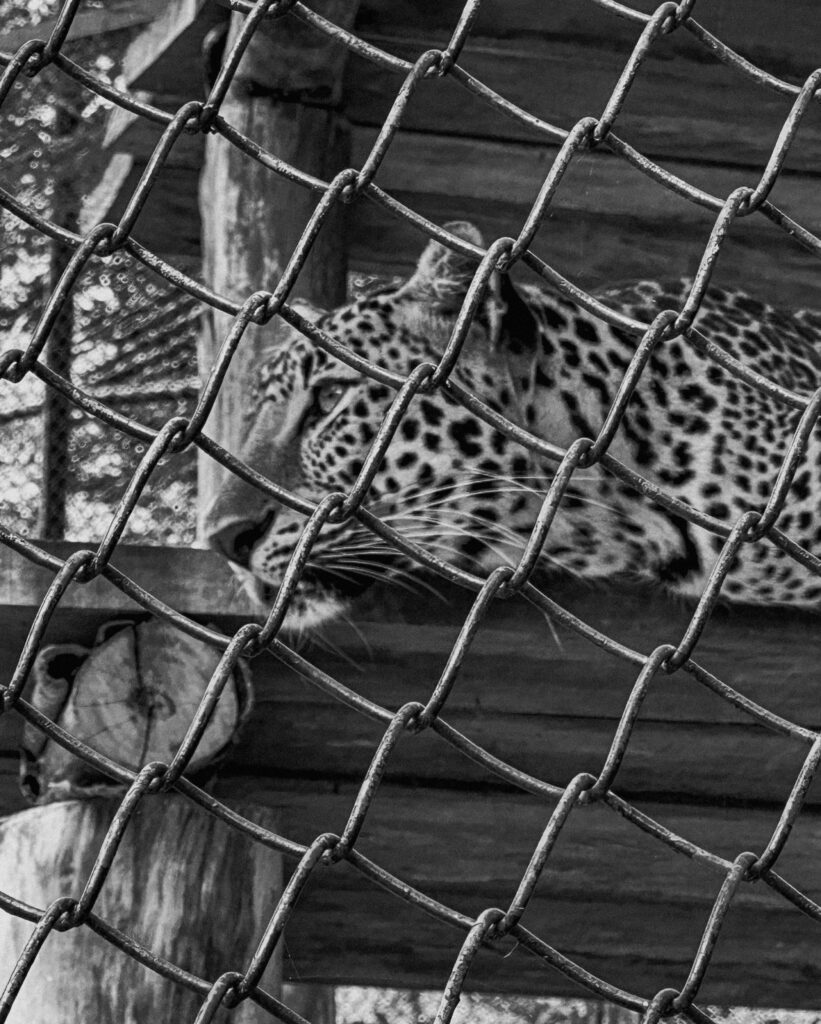
Photo by Aditya Pathak on Unsplash
- They see an animal out of its natural context.
- They learn that keeping animals in cages is normal.
- They don’t see real animal behavior — just a fraction of what the species truly is.
Modern alternatives like wildlife documentaries, VR experiences, and sanctuaries provide far more genuine education about animals without exploiting them. Unlike zoos, which highlight why zoos are cruel by keeping animals in confinement for entertainment, these alternatives allow people to learn, connect, and appreciate wildlife in ethical and compassionate ways.
Real Facts That Prove Zoo Cruelty
1. Shortened Lifespans & Physical Suffering
- Captive African elephants live an average of 16.9 years, compared to 35.8 years in the wild.
- Nearly 70% of adult male gorillas in North American zoos die from heart disease — a condition extremely rare in the wild.
- Captive orcas (killer whales) suffer mortality rates three times higher than wild populations, and no captive orca has lived beyond 55.8 years, while wild females often live 60–80 years.
2. Psychological Trauma and Zoochosis
- Chimpanzees in zoos show widespread trauma: rocking, vomiting, self-mutilation, hair plucking, and even eating feces.
- Clouded leopards and gibbons display depression, brown bears show OCD-like behaviors, and giraffes often suffer anxiety.
- Nearly 80% of U.S. Zoo giraffes exhibit stereotypic behaviors such as pacing or bar-licking due to enclosures as small as 0.17 acres compared to their natural range of 127,000 acres.
3. Captivity Damages the Brain
- Studies show captivity causes neurological damage, changing brain regions linked to memory, stress, and emotion (hippocampus, amygdala, basal ganglia). This damage results from chronic stress and lack of stimulation.
4. Death Rates in Indian Zoos
- Delhi Zoo: Between April 2018 and June 2019, 245 animals died in just 14 months, a mortality rate near 20% — four times higher than the accepted standard.
- Bannerghatta Biological Park, Bangalore: In 2020–21, 263 animals died compared to only 51 births.
- Thiruvananthapuram Zoo, Kerala: Nearly 500 animals died in 5 years, with one year seeing 71 deer deaths due to tuberculosis.
5. Death Toll in UK and Europe
- In the UK, 2024 reports showed 44,620 animal deaths across 75 zoos in just one year — and nearly half were endangered or critically endangered species.
- Across Europe, 3,000–5,000 healthy animals are euthanized annually due to overcrowding or “management issues”.
- South Lakes Safari Zoo (UK) reported 500+ deaths in four years, many due to preventable causes like hypothermia, emaciation, or animals being attacked within enclosures.
Are There Alternatives?
Yes — and they’re growing worldwide. Instead of supporting zoos, we can:
- Visit wildlife sanctuaries where rescued animals live in more natural conditions.
- Support conservation programs that protect animals in their native habitats.
- Encourage eco-tourism that allows people to see wildlife without taking them from their homes.
- Use technology (like AR, VR, and documentaries) to learn about animals in ways that don’t involve suffering.
What We Can Do
Change begins with awareness. Here’s how you can take action:
- Stop visiting zoos and encourage friends and family to do the same.
- Share knowledge about the reality of zoo cruelty.
- Support animal rights groups working toward sanctuary-based models.
- Choose ethical entertainment that doesn’t rely on animal suffering.
Conclusion
Zoos may appear to be harmless fun, but for animals, they are prisons. Stripped of freedom, family, and natural behavior, these creatures live lives of quiet suffering for human amusement. This is one of the core reasons why zoos are cruel, because what visitors see is not the animals’ true nature but the consequences of captivity.
It’s time we stop normalizing cruelty and start respecting animals as they truly are wild, free, and deserving of a life beyond.
Famous Quotes for animals’ freedom
- “The greatness of a nation and its moral progress can be judged by the way its animals are treated.” — Mahatma Gandhi
- “Until one has loved an animal, a part of one’s soul remains unawaken.” — Anatole France
- “Animals should not require our permission to live on earth. They were given the right to be here long before we arrived.” — Anthony Douglas Williams
- “Life without liberty is like a body without spirit.” — Kahlil Gibran
Reference/sources
1. Elephant live longer in wild ref: www.awf.org
2. orcas morality rate higher in captivity ref: awionline.org
3. Delhi Zoo ‘ animals in 2018,19 ref: indianexpress
4. In Kerala ,500 animals’ death newindianexpress
keyword: – why zoos are cruel, why zoos are cruel, why zoos are cruel.
ALSO READ: – Are Humans Naturally Plant-Based Eaters?
ALSO READ: – 7 Vegan Myths You Need to Stop Believing

